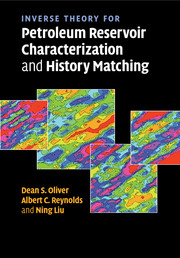Book contents
- Frontmatter
- Contents
- Preface
- 1 Introduction
- 2 Examples of inverse problems
- 3 Estimation for linear inverse problems
- 4 Probability and estimation
- 5 Descriptive geostatistics
- 6 Data
- 7 The maximum a posteriori estimate
- 8 Optimization for nonlinear problems using sensitivities
- 9 Sensitivity coefficients
- 10 Quantifying uncertainty
- 11 Recursive methods
- References
- Index
9 - Sensitivity coefficients
Published online by Cambridge University Press: 06 January 2010
- Frontmatter
- Contents
- Preface
- 1 Introduction
- 2 Examples of inverse problems
- 3 Estimation for linear inverse problems
- 4 Probability and estimation
- 5 Descriptive geostatistics
- 6 Data
- 7 The maximum a posteriori estimate
- 8 Optimization for nonlinear problems using sensitivities
- 9 Sensitivity coefficients
- 10 Quantifying uncertainty
- 11 Recursive methods
- References
- Index
Summary
Efficient inverse theory methods based on the optimization methods presented earlier require knowledge of the sensitivity coefficients, i.e. the relationship between small changes in model variables (such as permeability at a point or within a gridblock) and changes in the state variables such as pressure or saturation. For linear problems, this relationship is often clear from first principles, but for nonlinear flow and transport problems, the relationship must be derived from the partial differential equations that govern flow and transport.
With the Bayesian approach we prefer, generating a single history-matched realization using randomized maximum likelihood requires the minimization of the objective function of Eq. (8.23). The optimization procedures that we have discussed involve sensitivity coefficients, i.e. the derivatives of predicted data with respect to model parameters. However, one does not necessarily have to calculate all individual elements of the sensitivity matrix G. For example, we have seen that the BFGS and LBFGS algorithms simply require the computation of the gradient of the objective function, which can be done without explicitly computing the sensitivity matrix.
In the next few sections we will develop the basic ideas through simple examples involving steady flow, then apply the methods to realistic problems involving transient multi-phase flow for history matching.
- Type
- Chapter
- Information
- Publisher: Cambridge University PressPrint publication year: 2008

